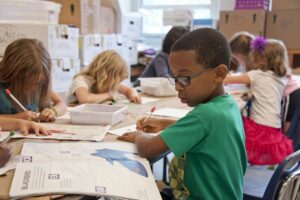Community Feedback: How Public Input Enhances Student Initiatives
In today’s education landscape, especially in programs that promote student innovation and project-based learning, one key factor often makes the difference between a good idea and a transformative one: community feedback. When students step outside the classroom and engage with real people facing real problems, their ideas evolve. Projects become more relevant, effective, and sustainable. And perhaps most importantly, students learn the value of listening—a vital skill for leaders and changemakers.
The Power of Listening to the Community
Many student-led initiatives begin with enthusiasm and creativity. However, without community input, even the most well-intentioned projects risk missing the mark. Whether the goal is to improve public health, reduce environmental impact, or solve a local infrastructure challenge, it’s the people on the ground—residents, small business owners, teachers, or healthcare workers—who can provide valuable insight into what’s actually needed and what solutions will work in practice.
Community feedback brings context to student ideas. It fills the gap between textbook learning and real-world application. It ensures that student innovators don’t just build something for the community, but with it.
Why Community Feedback Matters in Education-Based Innovation
- Increases Relevance
Community input helps students tailor their projects to reflect the actual needs and concerns of the people affected. This makes solutions more practical and impactful.
Example: A student group working on a water filtration system may learn from locals that the real issue isn’t filtration—it’s accessibility during dry seasons. Their solution then shifts focus, guided by that feedback.
- Builds Empathy and Social Awareness
Listening to diverse perspectives teaches students to understand people with different experiences. It fosters empathy, one of the most critical traits of effective leaders.
- Improves Design and Functionality
Community members can point out potential design flaws or suggest improvements based on firsthand experience. This kind of collaborative iteration is the foundation of design thinking.
- Fosters Long-Term Sustainability
Projects built with community support are more likely to gain traction, funding, and ongoing engagement. A sense of shared ownership encourages people to maintain and advocate for the solution over time.
How to Gather Meaningful Community Feedback
Receiving community feedback isn’t just about handing out surveys. It’s about creating dialogue, building relationships, and respecting different voices.
Here are some strategies students and educators can use:
- Conduct Interviews and Focus Groups
One-on-one conversations or small group discussions allow students to dig deep into local needs and preferences. Asking open-ended questions creates room for storytelling and context that numbers alone can’t provide.
- Use Surveys Wisely
Surveys can be helpful for gathering broad input, but they must be designed thoughtfully. Keep questions clear, relevant, and inclusive of diverse responses.
- Collaborate with Local Organizations
Partnering with schools, non-profits, or neighborhood associations can help connect students with community members and offer credibility to their efforts.
- Host Community Events or Demonstrations
Interactive presentations or prototype demos let residents see a student project in action and give instant feedback. These events also raise awareness and buy-in.
- Use Feedback Loops
Gather input not just once, but throughout the project. Revisit the community after changes are made, and ask, “Does this work better for you now?”
Real-World Example: Community Feedback in Action
Consider a student team from a middle school participating in an environmental challenge. They decide to reduce waste by designing a neighborhood composting system. Initially, they build small compost bins and place them in local parks.
However, community feedback revealed three key issues:
- Residents didn’t know how to use the bins properly.
- There were concerns about odor and pest control.
- Elderly residents found it difficult to carry compost to the bins.
By engaging with the community, the students redesigned their project. They created multilingual instructions, added odor-proof lids, and established a mobile collection unit to assist seniors.
The result? A more inclusive and functional solution, increased community participation, and a powerful lesson in co-creation.
Benefits for Students Beyond the Project
Incorporating community feedback isn’t just about improving a project—it transforms the students themselves:
- They become better communicators, learning how to ask questions, present ideas, and receive constructive criticism.
- They develop critical thinking skills, as they must analyze and adapt based on real-world input.
- They grow in confidence, knowing their work makes a meaningful difference.
Most importantly, students begin to see themselves not just as learners, but as active contributors to their communities.
Building a Culture of Collaboration in Schools
Educators and innovation programs can encourage this approach by:
- Including community engagement as part of project rubrics.
- Facilitating partnerships between students and local leaders.
- Teaching skills like active listening, user research, and stakeholder mapping.
Programs like the Christopher Columbus Awards already emphasize community impact, and integrating feedback mechanisms strengthens that mission.
Final Thoughts: Innovation Is a Two-Way Street
For students to create real change, they must be willing to listen, learn, and adapt. Community feedback is not a barrier to creativity—it’s a catalyst for it. When young innovators open themselves to the voices around them, their projects become more thoughtful, more effective, and more human.
By involving the community, students don’t just solve problems. They build relationships, earn trust, and plant the seeds of future leadership. And that’s the kind of education that lasts a lifetime.



